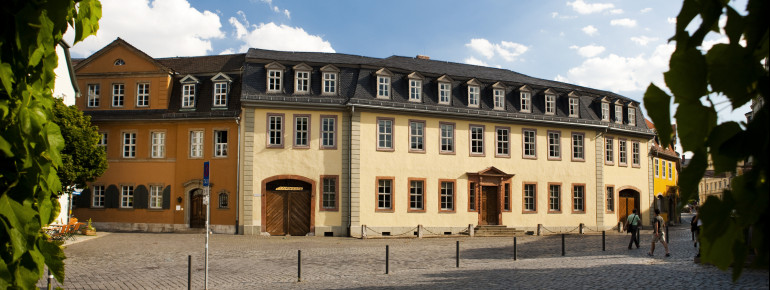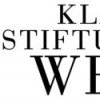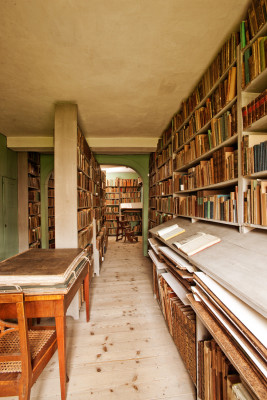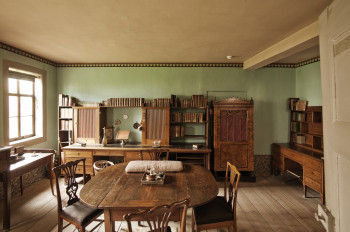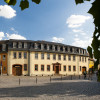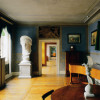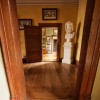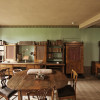Contents
Description
The Goethe National Museum is the most significant museum about German writer Johann Wolfgang von Goethe's life. The museum consists of the historical residence, the appropriated gardens and two museum buildings from the 20th century.
At the residence, visitors get an idea of what the house looked like during the last years of Goethe's life. While the anterior part shows representative living and drawing rooms, the back lets you see behind the curtains and into Goethe's work, with rooms such as his private library on display.
Apart from the residence, Goethe National Museum contains additional exhibition rooms, namely eleven rooms filled with information on Goethe's life and work. Goethe's many talents are shown, from literature and art to politics and botany. Plenty of original pieces are exhibited, like collectors' items, diaries, letters, everyday objects and personal memorabilia. Audio guides to lead you through the museum are provided.
A further part of Goethe's generous inheritance is his art collection, which was known to be the largest private art collection at the time. Over 9000 printed graphics and 2000 drawings, amongst which you will find pieces by world-famous artists like Rembrandt, De Witt, Tintoretto, Tischbein and C.D. Friedrich. Goethe's own drawings are also included in the collection. The museum has since added another 40,000 sheets of graphics to the collection. They are part of the grapic collection of the Weimar Classicism foundation, wich is one of the most significant collections in Germany.
Historical Information
Johann Wolfang von Goethe lived in the residence on Frauenplan for over 50 years until he died. First he rented the house, but in 1792 the duke Carl-August of Sachen-Weimar bought the property and gave it to his friend Goethe, who by the time had become aristocratic himself. Goethe then remodelled the residence. He ordered for staircases to be built that left niches for sculptures and to include stuccoed ceilings to match his classical taste. The anterior part of the house held rooms like the living room, rooms to receive guests and to assemble. The rear house, on the other hand, held a spacious study with access to the gardens. Beside Goethe, his family and attendants lived in the residence and temporarily also his best friend and advisor Johann Heinrich Meyer.
In addition, the house served well as a place to extend Goethe's art collection. The original art pieces as well as the furniture remain at the residence until today. Today's set up closely resembles that of Goethe's last years. Although the gardens were primarily cared for by Goethe's wife Christiane, there were some patches reserved for Goethe's experiments on plants.
Interesting facts
- Goethe National Museum is among the 5 best rated Tourist Attractions in Thuringia.
How to get there
Goethe National Museum is located at the historic city centre of Weimar. The railway station is only a 15 minutes' walk from the museum.

